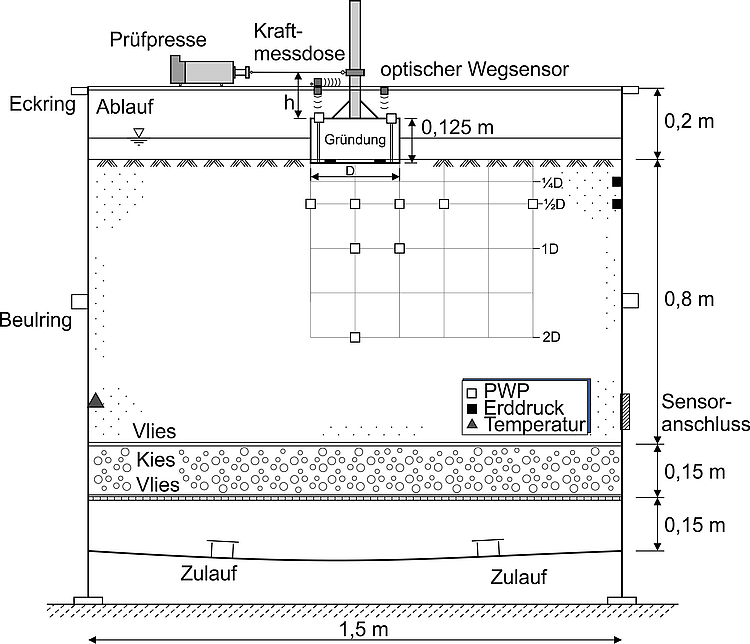SFB "Offshore-Megastructures"

| Led by: | Prof. M. Achmus |
| Team: | M.Sc. Norman Goldau, M.Sc. Jann-Eike Saathoff |
| Year: | 2021 |
| Funding: | DFG |
| Duration: | 01.01.2021 – 31.12.2024 |
| Further information | https://www.sfb1463.uni-hannover.de/en/ |
Description:
The objective of the project is the experimental investigation of the behaviour of a gravity foundation on sandy soil under combined vertical force and horizontal force/bending moment loading on a model scale. As a result, both the development of excess pore water pressures, resulting in a reduction in bearing capacity under partially drained loading, and the deformation accumulation under drained loading under different boundary conditions are to be observed.
The planned stainless steel test tank has a diameter of 1.5 metres and an absolute height of 1.5 metres. Edge influences are minimised by these dimensions. Any influences can be measured using earth pressure sensors positioned at the edge of the tank. The intended fine sand has similar mechanical properties to North Sea sand and a relatively low permeability. A gravel filter with a separating fleece and an inflow area for applying an upward hydraulic gradient are located in the lower area of the container. The target variables of the tests are the deformation of the structure on the one hand and the accumulating excess pore water pressure on the other. The short drainage paths in the model, which do not favour the accumulation of excess pore water pressure, are to be counteracted by a relatively high loading frequency that still excludes inertia effects. The addition of hydroxypropyl methylcellulose (HPMC) to the water used in the test stand will also be experimented with.
The planned base stress of 10 kPa is realised via the self-weight in the form of weight plates. The horizontal load is applied via a load eccentricity with an electromechanical servo test cylinder. The load is applied with 1,000 cycles. A frequency of approx. 0.5 Hz is planned for the drained test series. In the partially drained tests, a frequency between 1 Hz and a maximum of around 3 Hz is planned for sufficient pore water overpressure accumulation. In this frequency range, the consideration of inertia effects can still be neglected. The lateral displacement and the inclination of the structure are measured without contact using three height-adjustable optical displacement sensors. Two earth pressure model sensors (diameter 3 cm) are installed below the foundation in order to be able to estimate the bedding stress.














